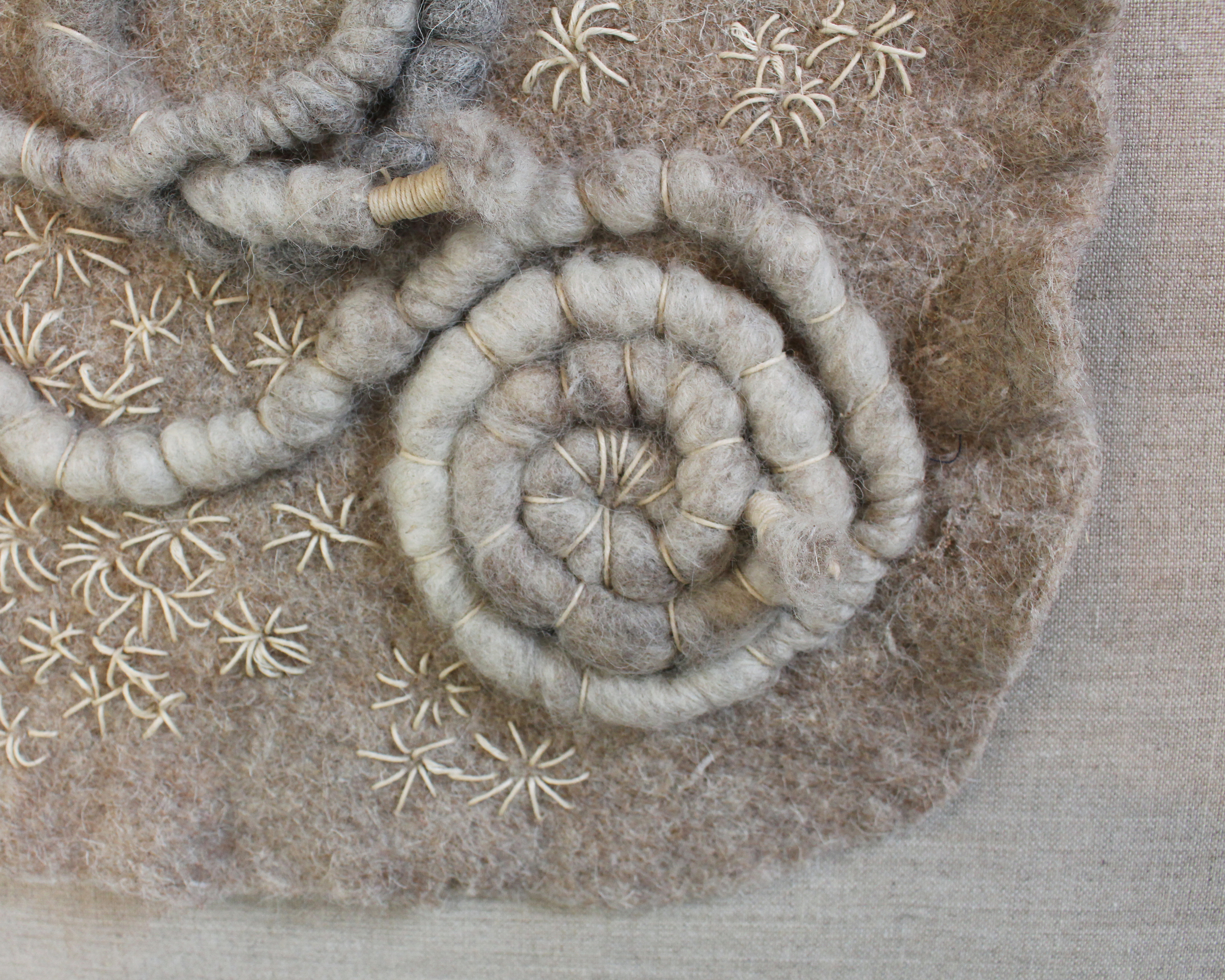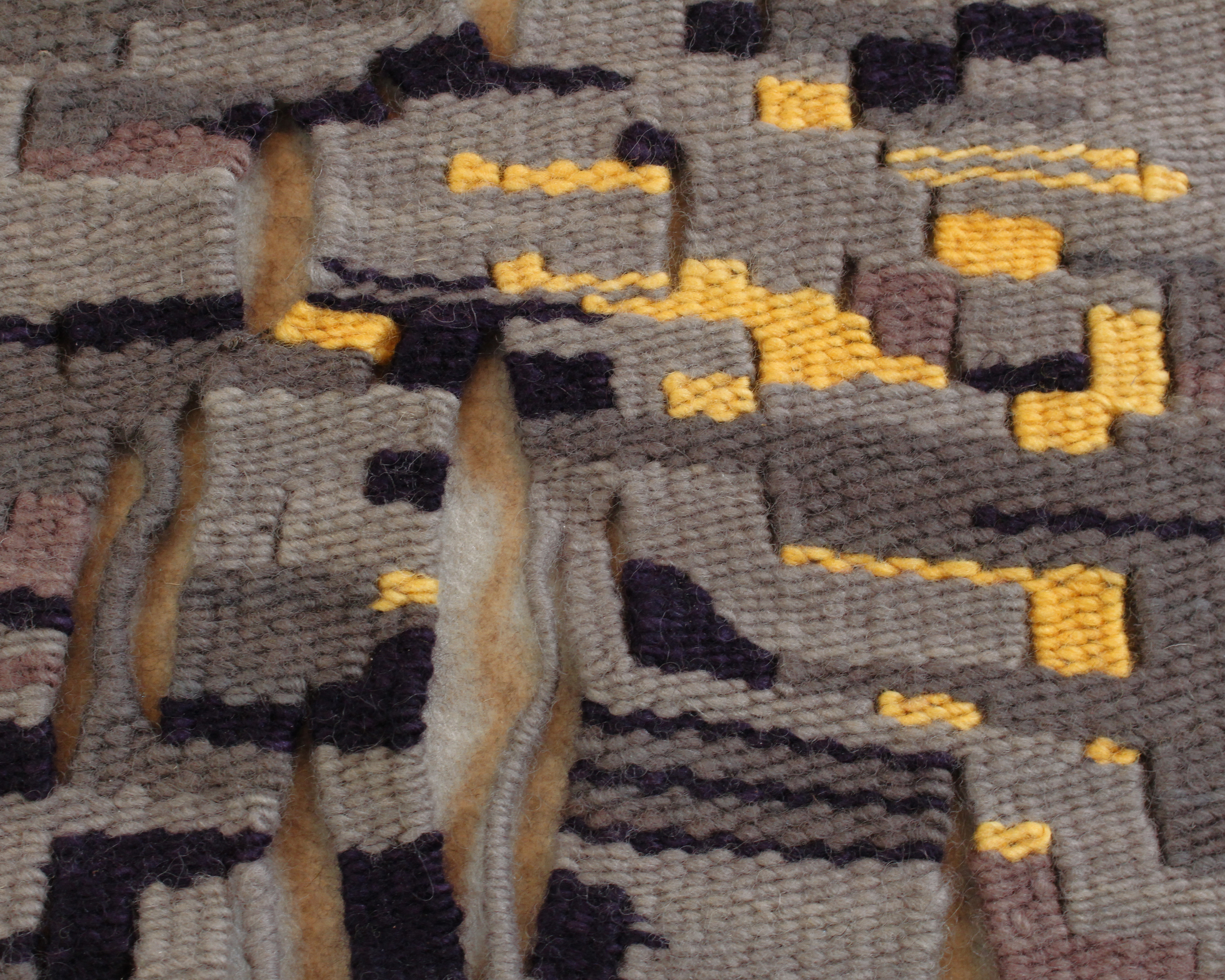Unlike traditional tapestries, which are pictorial and 2-dimensional, my tapestry art is, for the most part, abstract. Working without a tapestry “cartoon”, my art is born from a combination of imagination, experimentation, and a rich abundance of materials. I use a Navajo wool warp and hand-dyed rug wool to create the basic structure, sometimes adding other materials such as waxed linen, unspun dyed sheep locks, linen, cotton and more.
I enjoy working with chunky rug wool. I like the feel of it and the heft of the woven result. I start by selecting materials. Before warping the loom, I have some ideas about the direction I will follow, maybe a few simple sketches, but I like to improvise. The color and texture of the materials lead me. Layers add dimension, as do coils and strips. Some works are further embellished after completing the weaving process.
Inspiration comes from many sources: forms in nature, images from dreams, traditional designs of indigenous cultures, and of course, the materials themselves. My art is organic; it grows line by line, section by section. At some point, it “takes on a life of its own”. Impressions of trees, leaves, roots, creatures, rock, fire, water and sky emerge. The result is primal, soulful art which honors the natural landscape, as well as the inner landscape of my unconscious.
For me, the rhythmic process of joining warp and weft has a meditative quality; years of meditation practice inform this process. I start with separate strands of fiber, and in the end, that magical moment of cutting the work off the loom, a transformation has taken place: I have a solid textile, a work of art.
I have a picture on the bulletin board in my studio: an old woman sits in a tiny space, a primitive loom in front of her. Maybe she’s weaving a rug, or cloth for a garment. Her back might hurt, but her face looks peaceful. I, too, spend hours at a loom. I am grateful to the weavers who came before me, and grateful for the opportunity to join warp and weft creating my own tapestry art.

